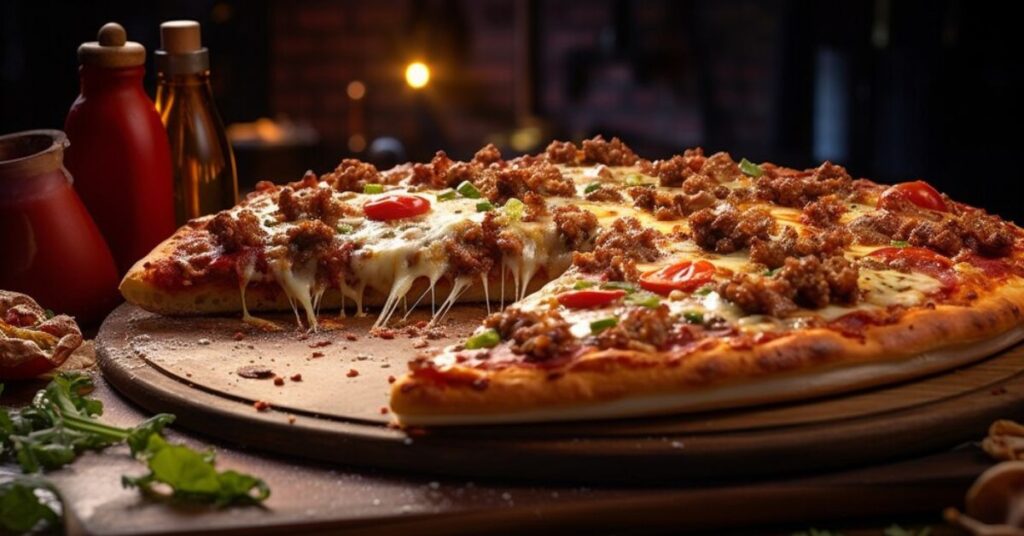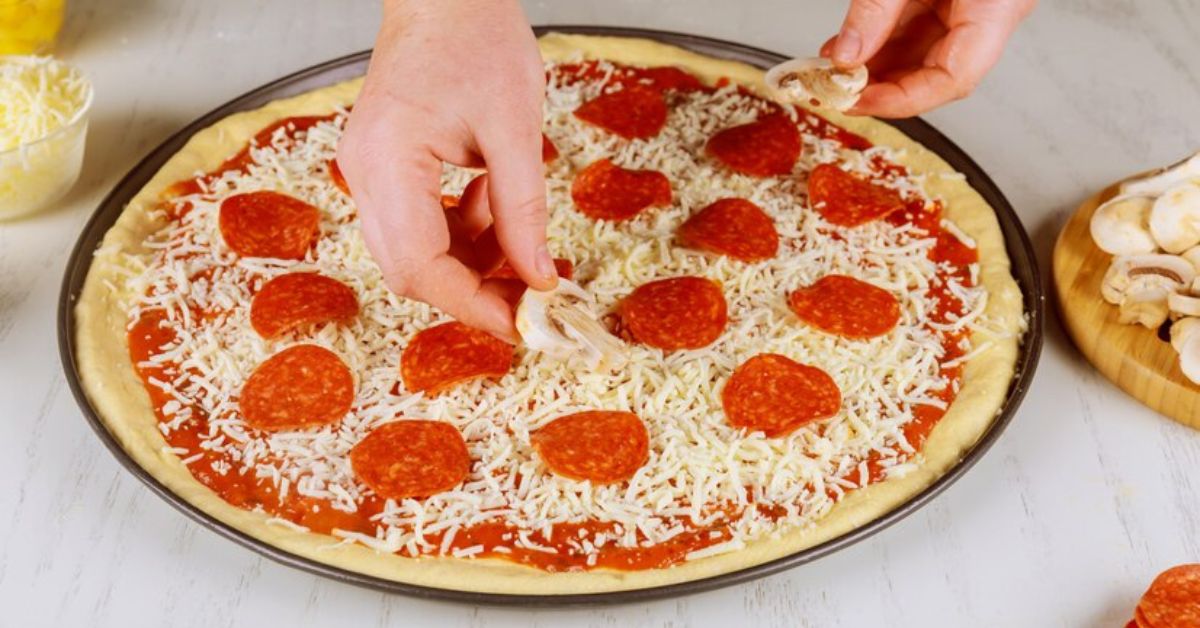Pizza, a beloved dish cherished by people worldwide, is not just about tossing toppings onto dough and throwing it in the oven. The art of layering a pizza is a crucial step that can make or break the final product. From choosing the right crust to balancing flavors and textures, each layer contributes to the overall harmony of the pizza. In this comprehensive guide, we’ll delve into the intricacies of pizza layering, providing you with tips and techniques to create the perfect pie every time.
Importance of Properly Layering a Pizza
Properly layering a pizza is essential for several reasons. Firstly, it ensures that each bite contains a harmonious blend of flavors and textures, enhancing the overall eating experience. Additionally, proper layering prevents the crust from becoming soggy by creating a barrier between the sauce and toppings. Moreover, a well-layered pizza is visually appealing, enticing both the eyes and taste buds.
Choosing the Right Crust
The foundation of any good pizza is its crust. Whether you prefer thin and crispy or thick and chewy, selecting the right crust sets the stage for the rest of the toppings. Consider factors such as dough texture, flavor, and baking method when choosing your crust.
Sauce Selection and Application
The sauce serves as the flavor base of the pizza, complementing the other ingredients. Choose a sauce that complements your toppings and spread it evenly across the crust, leaving a small border for the crust to crisp up.

Cheese: The Foundation of Every Pizza
Cheese not only adds richness and creaminess but also helps hold the toppings together. Opt for high-quality cheese like mozzarella or provolone and distribute it evenly over the sauce to ensure each bite is cheesy perfection.
Adding Meat and Protein
From pepperoni to sausage to chicken, meat toppings add depth of flavor and protein to your pizza. Cook any raw meats before adding them to the pizza and distribute them evenly to ensure every slice gets a taste of the savory goodness.
Selecting Vegetables and Other Toppings
Vegetables add freshness and crunch to your pizza while providing essential nutrients. Choose a variety of colorful vegetables like bell peppers, onions, mushrooms, and olives, and distribute them evenly across the pizza for maximum flavor impact.
Incorporating Herbs and Seasonings
Herbs and seasonings elevate the flavor profile of your pizza, adding depth and complexity. Sprinkle fresh herbs like basil or oregano over the toppings and finish with a drizzle of olive oil for a burst of freshness.
The Art of Layering: Techniques and Tips
- Layer toppings from heaviest to lightest to prevent them from sinking into the sauce.
- Avoid overloading the pizza with toppings, as this can lead to a soggy crust and uneven cooking.
- Leave a border around the edge of the pizza to ensure the crust bakes evenly and develops a golden brown color.
- Experiment with different flavor combinations and ingredients to create unique and delicious pizzas.
Avoiding Common Mistakes
- Using too much sauce can make the pizza soggy and overpower the other flavors.
- Overloading the pizza with toppings can make it difficult to bake evenly and result in a soggy crust.
- Neglecting to pre-cook raw meat toppings can lead to undercooked meat and food safety issues.
Oven Preparation and Baking
Preheat your oven to the recommended temperature and place the pizza on a preheated baking stone or pizza pan. Bake until the crust is golden brown and the cheese is bubbly and melted, rotating halfway through for even cooking.
Serving and Presentation
Once the pizza is baked to perfection, remove it from the oven and let it cool for a few minutes before slicing. Serve hot and garnish with fresh herbs or grated cheese for an extra touch of flavor.
Experimenting with Unique Pizza Combinations
Don’t be afraid to think outside the box and experiment with unique pizza combinations. From Hawaiian to BBQ chicken to vegetarian options, the possibilities are endless. Get creative and have fun exploring new flavor combinations.
Dietary Considerations and Alternatives
For those with dietary restrictions or preferences, there are plenty of alternatives available. From gluten-free crusts to dairy-free cheese to vegan meat substitutes, you can still enjoy delicious pizza tailored to your dietary needs.
Conclusion: Perfecting Your Pizza Layering Technique
Mastering the art of pizza layering takes practice, but with the right techniques and ingredients, you can create restaurant-quality pizzas in the comfort of your own home. From choosing the perfect crust to balancing flavors and textures, each step plays a crucial role in creating the ultimate pizza experience.
ALSO READ: Kecveto: Organic Superfood Blend for Vital Nutrition
Unique FAQs
- Can I use pre-made pizza dough for homemade pizzas?
- Absolutely! Pre-made pizza dough is a convenient option for homemade pizzas and can be found in most grocery stores. Just be sure to follow the package instructions for baking.
- What’s the best way to reheat leftover pizza?
- To reheat leftover pizza, place it in a preheated oven or skillet until warmed through. This helps maintain the crispiness of the crust and ensures the cheese melts evenly.
- Can I freeze homemade pizza for later?
- Yes, you can freeze homemade pizza for later. Wrap the cooled pizza tightly in plastic wrap and aluminum foil before placing it in the freezer. To reheat, simply bake it from frozen until heated through.
- How long should I let the pizza dough rise before baking?
- The length of time for pizza dough to rise depends on the recipe and ambient temperature. Generally, you should let it rise until it has doubled in size, which can take anywhere from 1 to 2 hours.
- What’s the secret to a crispy crust?
- The key to a crispy crust is preheating your oven and baking the pizza on a hot surface, such as a pizza stone or baking sheet. Additionally, avoiding overloading the pizza with sauce and toppings helps prevent the crust from becoming soggy.











